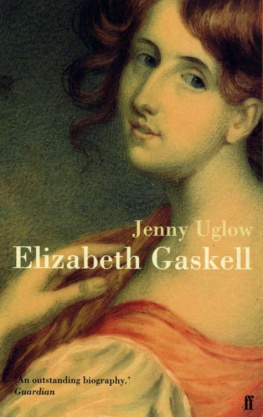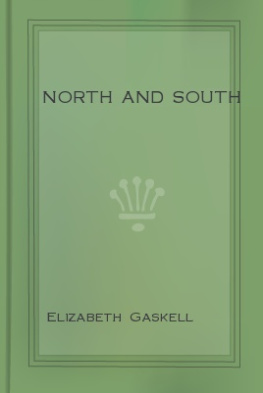Elizabeth Cleghorn Gaskell - Ruth
Here you can read online Elizabeth Cleghorn Gaskell - Ruth full text of the book (entire story) in english for free. Download pdf and epub, get meaning, cover and reviews about this ebook. City: [Waiheke Island], year: 2010, publisher: Floating Press, genre: Religion. Description of the work, (preface) as well as reviews are available. Best literature library LitArk.com created for fans of good reading and offers a wide selection of genres:
Romance novel
Science fiction
Adventure
Detective
Science
History
Home and family
Prose
Art
Politics
Computer
Non-fiction
Religion
Business
Children
Humor
Choose a favorite category and find really read worthwhile books. Enjoy immersion in the world of imagination, feel the emotions of the characters or learn something new for yourself, make an fascinating discovery.
- Book:Ruth
- Author:
- Publisher:Floating Press
- Genre:
- Year:2010
- City:[Waiheke Island]
- Rating:3 / 5
- Favourites:Add to favourites
- Your mark:
- 60
- 1
- 2
- 3
- 4
- 5
Ruth: summary, description and annotation
We offer to read an annotation, description, summary or preface (depends on what the author of the book "Ruth" wrote himself). If you haven't found the necessary information about the book — write in the comments, we will try to find it.
Ruth — read online for free the complete book (whole text) full work
Below is the text of the book, divided by pages. System saving the place of the last page read, allows you to conveniently read the book "Ruth" online for free, without having to search again every time where you left off. Put a bookmark, and you can go to the page where you finished reading at any time.
Font size:
Interval:
Bookmark:
What if Charles Spurgeon helped you prepare next Sundays sermon?
Or what if you could talk over your preaching with Joseph Parker, Richard Baxter, Henry Ward Beecher and H. P. Liddon. Do you think it would make a difference to get the input of some of the greatest preachers who ever lived?
Thats precisely what Joseph Exell had in mind when he put together the massive series of volumes called The Biblical Illustrator. In what can only be called a Herculean feat, he spent years gathering preaching notes and sermon outlines from the very best preachers of his day (in the late 1800s and early 1900s), and he did it covering every book of the Bible.
Following the tradition of the time, he gave the series a flowery subtitle, describing it as anecdotes, similes, emblems, illustrations, expository, scientific, geographic, historical and homiletic, gathered from a wide range of home and foreign literature, on the verses of the Bible. He means that in these volumes you have everything you need in order to preach a sermon, teach a Bible class, or study a text on your own.
And it is amazingly comprehensive. Exell approached his task by taking every verse in the Bible and seeking to discover how it has been preached in the past. Though there is plenty of exegetical material here, this is not primarily a commentary.
This series is for preachers, teachers and Bible students.
Besides obviously being an omnivorous reader, he had a gift for amazing diligence. The Biblical Illustrator was published in 66 volumes. To give you a sense of how comprehensive it is, volume 49 contains 588 pages on Galatians. And the type in the original version was very small, with narrow margins so you almost had to have a magnifying glass to read it. But Joseph Exell had something in mind other than publishing a stylish book. He wanted to give preachers a book so complete that you could give it to someone and say, Go preach Galatians, and they could do it.
No one could ever use all the sermon outlines in the Biblical Illustrator. But thats not the point. We all agree that the best preacher starts with your study of the biblical text. But at some point you need to know what others have seen in the same text you are studying.
What did Spurgeon see?
What did Parker see?
What did Alexander MacLaren see?
Maybe you will see the same thing they did. Probably you will see something similar. But its entirely possible that Spurgeon (who has a flair for memorable phrasing) captured the thought of the text in a way that never occurred to you.
And there are times when the preacher needs some help in priming the pump. We all know what its like to be stuck in some passage of the Bible. You know what it says, you have studied the words, you have read a few commentaries, but somehow the message isnt jelling in your mind. Thats where the Biblical Illustrator is likely to be most helpful to you. If you are preaching on, say, Hebrews 10:19-25, you can find real help in the Biblical Illustrator. There is an expanded sermon outline by J. Colwell that almost anyone could expand into a profitable message. There is a lengthy and intricate outline by the Puritan pastor Thomas Boston and a moving exposition of Christ our high priest by Adolph Saphir.
Thats just one tiny example of one text. And Joseph Exell does that for every text in the Bible.
Its a phenomenal piece of work, and one that stands up very well more than a century later. I know of no comparable collection that has been done since then. I doubt if anyone would have the time or energy to attempt such a massive project today.
I bought my first copy of the Biblical Illustrator almost 20 years. Back then it came in six or seven massive volumes, printed on oversized pages with type so tiny I could hardly read it. About 10 years ago I purchased a CD with the Biblical Illustrator in PDF format. That was a huge improvement. But with the advent of ebook technology, we at last have the Biblical Illustrator in its most useful format. Because it is indexed to each section of the book, you can quickly find the passage you are looking for. And you can enlarge the text as much as you like.
As you can tell, Im big fan of the Biblical Illustrator because it preserves the wisdom of an earlier age. I would fully agree that you must start with your own study of the text, and we definitely need the fruit of recent biblical commentaries. But alongside your own study and the reading of current commentaries, there is a large place for reading the Biblical Illustrator.
Joseph Exell wanted to help preachers, teachers, and everyday Bible students. He succeeded admirably in his task. The fruit of his labors is now available for the first time in ebook format, making it more usable today than when it was first published.
For those who want to study the Bible and then teach it to others, the Biblical Illustrator will help you on every single text in the Bible. For over a century preachers and teachers have turned to it and found what they needed. I gladly say that it has often helped me, and I am glad to commend this series to you.
Dr. Ray Pritchard
President, Keep Believing Ministries
April 2012
Dallas, TX
The story is placed in the days when the judges ruled (Ruth 1:7), about a century before the time of David; but on its own showing it was not written till long after the events it describes (Ruth 4:7). How long afterwards is a question on which critics are not agreed; most of them consider it to be exilic (Ewald) or post-exilic (Bertheau, Wellhausen, Kuenen), mainly on the linguistic and genealogical evidence; but Driver (Introduction to O.T., 1891) thinks that the general beauty and purity of the style, which stand on a level with the best parts of Samuel, point rather to a date, which he does not seek to fix more definitely, before the exile. That the book was not received into the canon till a very long time after the captivity is shown by its place in the original Hebrew, where it occurs as one of the Hagiographa or writings, standing second among the five Megilloth or Festal Rolls, between Canticles and Lamentations, a position which proves that it did not become canonical till after the series of former prophets, extending from Joshua to 2 Kings, had been finally closed. In the LXX, however, which gives it the place it claims in the historical order, it comes between Judges and Samuel, and the same order is observed in the Vulgate and in the English A.V. That Josephus also must have reckoned it as an appendix to Judges is shown by his enumeration of the books of the O.T. as numbering only 22. (Chamberss Encyclopaedia.)
More than one reason may be found for supposing the book to have been written in Solomons time, probably the latter part of his reign, when law and ordinances had multiplied and were being enforced in endless detail by a central authority; when the manners of the nations around Chaldea, Egypt, Phoenicia were overbearing the primitive ways of Israel; when luxury was growing, societies dividing into classes, and a proud imperialism giving its colour to habit and religion. If we place the book at this period, we can understand the moral purpose of the writer and the importance of his work. He would teach people to maintain the spirit of Israels past, the brotherliness, the fidelity in every relation that were to have been all along a distinction of Hebrew life because inseparably connected with the obedience of Jehovah. The splendid temple on Moriah was now the centre of a great priestly system, and from temple and palace the national, and to a great extent the personal, life of all Israelites was largely influenced, not in every respect for good. The quiet suggestion is here made that the artificiality and the pomp of the kingdom did not compare well with that old time when the affairs of an ancestress of the splendid monarch were settled by a gathering at a village gate. (
Font size:
Interval:
Bookmark:
Similar books «Ruth»
Look at similar books to Ruth. We have selected literature similar in name and meaning in the hope of providing readers with more options to find new, interesting, not yet read works.
Discussion, reviews of the book Ruth and just readers' own opinions. Leave your comments, write what you think about the work, its meaning or the main characters. Specify what exactly you liked and what you didn't like, and why you think so.






